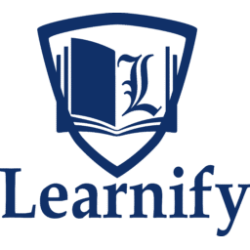Introduction
Workplace safety is evolving beyond traditional reactive approaches. Predictive analytics leverages big data, machine learning (ML), artificial intelligence (AI), and IoT to anticipate risks, prevent incidents, and enhance decision-making in health, safety, and environment (HSE) management. This future-oriented course explores how predictive analytics can revolutionize safety strategies, reduce workplace accidents, and optimize risk assessments using real-time data, AI models, and automation.
Objectives
By the end of this course, participants will be able to:
- Understand Predictive Analytics & Its Role in Safety Management – Learn key concepts, tools, and methodologies.
- Use Big Data & Machine Learning for Risk Prediction – Apply AI models to identify hazards before they happen.
- Implement IoT & Wearable Technologies for Real-Time Safety Monitoring – Utilize smart sensors and real-time alerts.
- Develop Safety Dashboards & Predictive Models – Build interactive analytics tools for proactive risk management.
- Integrate AI & Automation into HSE Decision-Making – Improve response times and reduce human error.
- Leverage Predictive Analytics for Environmental Risk Management – Forecast and mitigate environmental hazards.
- Explore Future Trends in AI-Driven Safety & Risk Prevention – Understand the impact of digital twins, blockchain, and Industry 5.0.
Who Should Attend?
This course is ideal for:
- HSE Managers & Safety Officers integrating predictive analytics into safety programs.
- Risk Analysts & Compliance Professionals improving incident prevention strategies.
- Data Scientists & AI Specialists developing AI-driven safety prediction models.
- Operations & Facility Managers reducing downtime and improving workplace safety.
- Regulatory & Government Authorities monitoring and enforcing predictive safety compliance.
- IT & Digital Transformation Leaders integrating IoT, AI, and big data in HSE.
Course Outline
Day 1: Introduction to Predictive Analytics in Safety Management
Session 1: Fundamentals of Predictive Analytics & Its Application in HSE
- What is predictive analytics? Overview of big data, AI, and ML in safety.
- Differences between reactive, proactive, and predictive safety models.
- Case Study: How AI-driven risk assessments have reduced workplace injuries.
Session 2: Data Collection for Predictive Safety Management
- Sources of safety data: incident reports, IoT sensors, worker behavior analytics.
- Importance of real-time monitoring & cloud-based data storage.
- Hands-on: Building a data pipeline for safety analytics.
Session 3: Machine Learning & AI for Risk Prediction
- Introduction to AI-driven risk detection models.
- Using supervised & unsupervised learning for hazard identification.
- Hands-on: Training an ML model to predict workplace accidents.
Day 2: IoT & Wearable Technology for Real-Time Safety Monitoring
Session 1: IoT-Enabled Smart Safety Systems
- How IoT sensors & real-time monitoring enhance workplace safety.
- Integration of smart PPE, biometric monitoring, and geofencing.
- Hands-on: Analyzing IoT sensor data for safety insights.
Session 2: Wearable Devices & AI-Powered Predictive Alerts
- Overview of wearable safety devices (exoskeletons, smart helmets, fatigue trackers).
- Using AI-powered alerts to prevent worker fatigue & accidents.
- Case Study: How wearables reduced incident rates in the construction industry.
Session 3: Predictive Maintenance & Equipment Failure Prevention
- Using machine learning models to predict machine breakdowns.
- Preventing equipment-related injuries through AI-driven maintenance.
- Hands-on: Developing a predictive maintenance model for industrial safety.
Day 3: Data-Driven Risk Assessments & Safety Dashboards
Session 1: Building Predictive Safety Dashboards
- Data visualization techniques for real-time risk tracking.
- Creating automated alerts & risk scores using AI-powered dashboards.
- Hands-on: Designing an interactive safety dashboard with Power BI/Tableau.
Session 2: Advanced Predictive Models for Incident Prevention
- Identifying patterns in workplace accidents using big data analytics.
- Predicting high-risk areas & worker behavior trends.
- Hands-on: Implementing AI-driven predictive analytics using Python/R.
Session 3: AI & NLP for Safety Report Analysis
- Using natural language processing (NLP) for automated incident report analysis.
- Extracting insights from historical safety records & compliance documents.
- Case Study: AI-based text analytics for identifying workplace safety gaps.
Day 4: Predictive Analytics for Environmental & Occupational Health Risks
Session 1: Environmental Risk Prediction with AI
- Using predictive models for air quality, chemical exposure & radiation monitoring.
- AI-powered early warning systems for natural disasters & industrial hazards.
- Hands-on: Developing a real-time environmental risk predictor.
Session 2: Behavioral Safety Analytics & Human Factor Risk Prediction
- AI-driven behavioral risk assessments for worker safety compliance.
- Psychological & cognitive fatigue monitoring using predictive analytics.
- Case Study: How behavioral AI reduced accident rates in aviation & mining.
Session 3: Automating Compliance with AI & Blockchain
- Using AI to ensure real-time compliance with HSE regulations.
- Blockchain integration for secure, tamper-proof safety records.
- Hands-on: Developing an AI-powered compliance automation tool.
Day 5: Future of Predictive Safety Management & AI-Driven Decision Making
Session 1: Emerging Trends – AI, Digital Twins & Smart Workplaces
- Introduction to Digital Twins for predictive safety simulations.
- AI-driven robotic process automation (RPA) for safety compliance.
- Case Study: Using digital twins to improve construction site safety.
Session 2: Real-World Applications & Industry Case Studies
- AI-powered predictive safety models in oil & gas, construction, and healthcare.
- Future of AI-driven worker safety regulations & policy development.
- Hands-on: Deploying a real-world AI safety model in an industrial setting.
Session 3: Final Project & Certification Assessment
- Participants develop & present their predictive safety analytics models.
- Expert feedback & improvement recommendations.
- Certification ceremony & next steps for AI-driven HSE implementation.
Course Delivery Format:
✔ Expert-Led Training – Learn from AI, IoT, and HSE professionals.
✔ Hands-On Machine Learning Workshops – Build real-world predictive analytics models.
✔ Real-Time Case Studies & Industry Best Practices – Explore how predictive safety works in construction, manufacturing, and oil & gas.
✔ IoT & Wearable Safety Demonstrations – See live smart PPE & AI-driven safety tools.
✔ Interactive Predictive Analytics Dashboards – Work with Power BI, Tableau, Python & AI models.
✔ Networking & Panel Discussions – Engage with industry experts, data scientists, and regulatory professionals.


